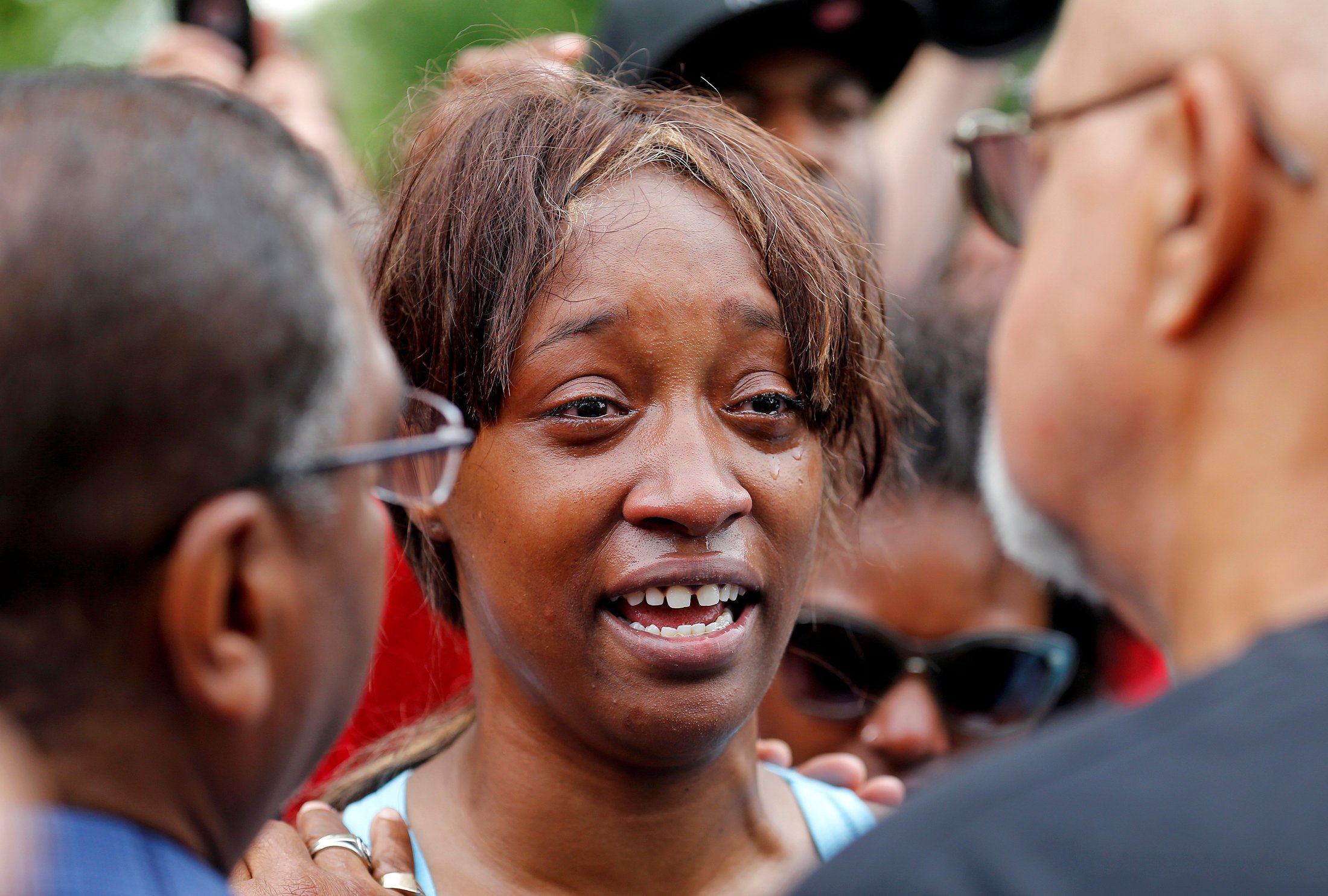
Before this week, the most recognizable and memorable video posted to Facebook Live was probably “Chewbacca Mom,” a woman trying on a Star Wars mask and laughing, hard. Its appeal, such as it was, came from its odd intimacy—thanks to the ability to stream live video directly from her phone, we were right there in her car with her.
A similar intimacy was present on Diamond Reynolds’ video of the death of Philando Castile, which she also filmed in her car under very different circumstances. In a week of tragedies that also includes the sniper shooting in Dallas and the shooting of Alton Sterling, Reynolds’ video stands out as a defining testament of how we live now.
Reynolds began broadcasting live immediately after a police officer shot Castile, her boyfriend, July 6 in Falcon Heights, Minn. At first panning back and forth between the body of Castile and Reynolds’ own face, the video provides a tutorial on incredible, learned endurance. In the face of tragedy, Reynolds is shockingly calm, using a level tone while speaking to the officer screaming and cursing at her. She acknowledges that Castile has been fatally shot, but does not allow it to sink in until she herself is detained, at which point the phone drops to the ground. All we see is sky and power lines. We hear her mourning Castile’s death—and, repeatedly, explaining to an officer whom she calls “sir” that Castile had just been following police orders—but not before she explains the situation to the collective mass watching it all unfold: “They threw my phone, Facebook.”
The increased attention to police violence in America reflects less a sudden spike than increased attention, now focused on a set of circumstances that are hardly new. What is new is that a story that might once have been easily ignored is now forcefully pushed onto the front page by the democratic power of video—and, in particular, live video. While smartphones have long had the ability to record and YouTube has existed for more than a decade, the fact of live-ness is a new development. Reynolds’ ordeal was being broadcast as it unfolded, lending both a particular drama—Castile could be saved, or another tragedy could befall Reynolds and her young daughter—and the sense that one could, somehow, intervene. Reynolds, narrating her own experience while living it, was asking both for witness and for help.
Reynolds’ video could not forestall death, but it did bring immense attention to a set of facts around one officer and one slain man. For those paying attention, though, it did something else, emphasizing a manner of being in the world that Reynolds, a black woman, has had to learn—extreme deference to the sort of authority that has proven its willingness to kill. It’s the repeated punching of “sir,” said reflexively and without irony, that moved Reynolds’ video from a way to convey the wrongfulness of Castile’s death into a yet more sweeping social commentary.
It’s not just the accessibility of the Facebook Live video—its availability to anyone with a Wi-Fi connection—that made it so powerful. It’s the uncinematic closeness in space, within the confines of Castile’s car, and in time. Since the start of the television age, news images have always had the visceral power to change minds or at least to startle and unnerve—as did footage from the Dallas shooting. But the human-scale nature of the Reynolds video made it something else entirely. It was happening in the moment, emphasizing just how powerless anyone watching was to stop it. Events unfolding for a live viewership rarely have quite so much of the voltage of, well, reality.
It’s hard to predict to what extent the Reynolds video, for all the attention it’s gotten, will impact the political scene; to many sets of ears, her calling the man who’s shot her boyfriend “sir” will sound like simple respect, the way things should be. But it’s not hard to imagine one way in which the video’s impact will resound: That those who find themselves in a traffic stop or a sidewalk altercation will, knowing that an undocumented story is one that fades quickly from view, take their phones, hit record, and start talking.
More Must-Reads from TIME
- Cybersecurity Experts Are Sounding the Alarm on DOGE
- Meet the 2025 Women of the Year
- The Harsh Truth About Disability Inclusion
- Why Do More Young Adults Have Cancer?
- Colman Domingo Leads With Radical Love
- How to Get Better at Doing Things Alone
- Michelle Zauner Stares Down the Darkness
Contact us at letters@time.com